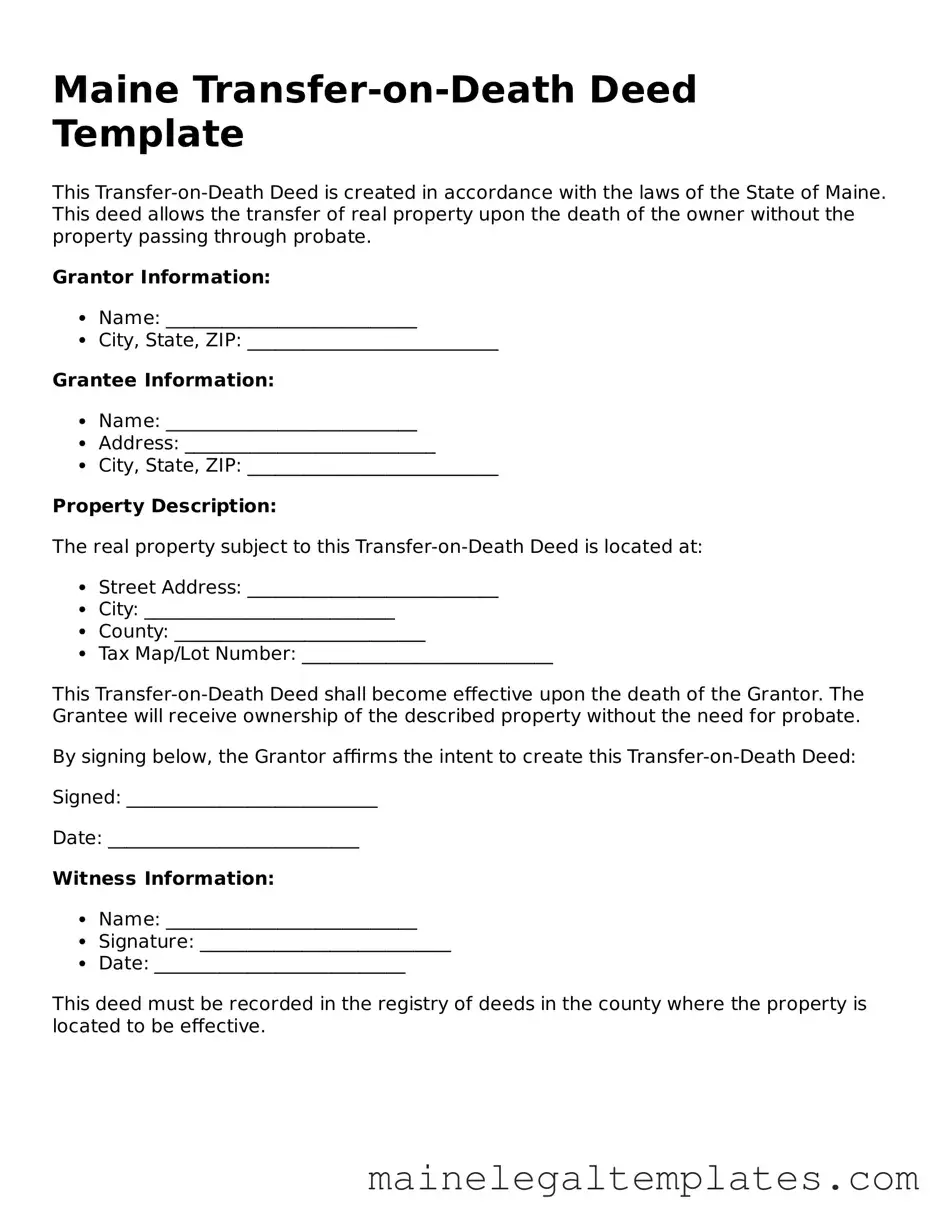Maine Transfer-on-Death Deed Template
This Transfer-on-Death Deed is created in accordance with the laws of the State of Maine. This deed allows the transfer of real property upon the death of the owner without the property passing through probate.
Grantor Information:
- Name: ___________________________
- City, State, ZIP: ___________________________
Grantee Information:
- Name: ___________________________
- Address: ___________________________
- City, State, ZIP: ___________________________
Property Description:
The real property subject to this Transfer-on-Death Deed is located at:
- Street Address: ___________________________
- City: ___________________________
- County: ___________________________
- Tax Map/Lot Number: ___________________________
This Transfer-on-Death Deed shall become effective upon the death of the Grantor. The Grantee will receive ownership of the described property without the need for probate.
By signing below, the Grantor affirms the intent to create this Transfer-on-Death Deed:
Signed: ___________________________
Date: ___________________________
Witness Information:
- Name: ___________________________
- Signature: ___________________________
- Date: ___________________________
This deed must be recorded in the registry of deeds in the county where the property is located to be effective.
